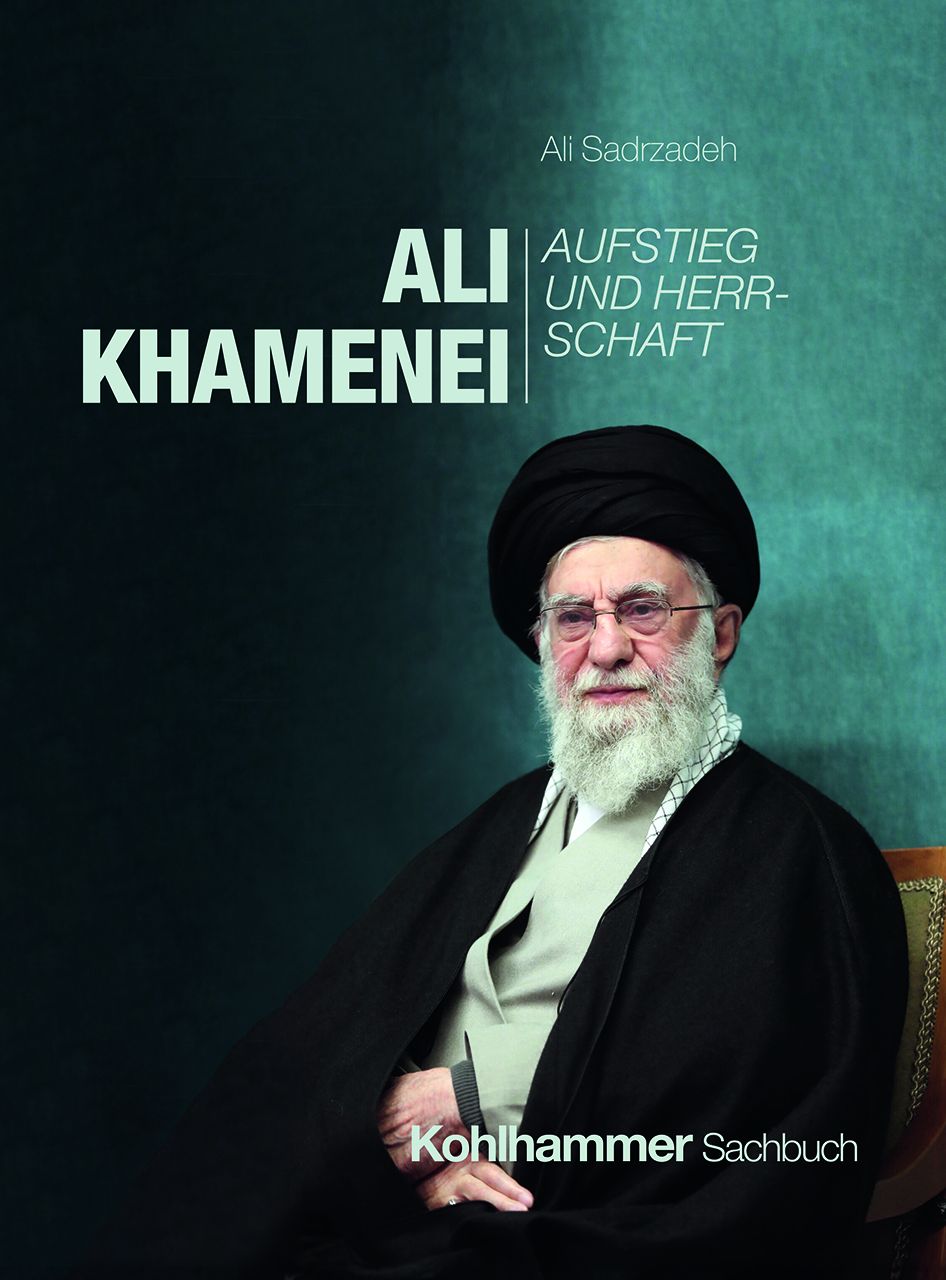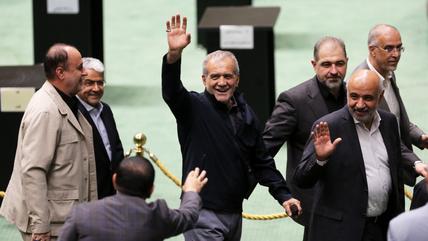The man pulling Iran's strings

For 36 years, Ali Khamenei has ruled Iran and, through a network of intelligence agencies, proxies, and propaganda organs, extended his influence far beyond its borders. He is the man who pulls Iran's strings. Though he often remains inconspicuous in the background, it is Khamenei—not the president or the parliament, which in any case is free of any real opposition—who has the final say on everything that happens domestically.
No one had anticipated him becoming Supreme Leader when Ayatollah Ruhollah Khomeini died in 1989. For one, Khamenei was not yet an Ayatollah but only a mullah, according to the Iranian constitution. The title of Ayatollah was awarded to him later, even though he had not completed the lengthy training normally required.
Another reason was that a different man, Ayatollah Hossein Ali Montazeri, was long considered Khomeini’s successor. But Montazeri had grown too critical in the preceding years and believed the Islamic Republic was on the wrong path. As a result, he was not only passed over but effectively removed.
Although Khamenei is one of the most powerful and influential figures in recent world politics, remarkably little is known about him. Ali Sadrzadeh, a journalist born in Iran and who has lived in Germany since the 1960s, seeks to change that with his book"Ali Khamenei: Aufstieg und Herrschaft" ("Ali Khamenei: Rise and Rule") (Kohlhammer Verlag, 2025).

Sadrzadeh makes it clear from the outset: "This book is not a conventional biography. Ali Khamenei's life story cannot be traced in a truly authentic and thorough chronological order. He delivers speeches, but he does not talk about his childhood, his parents, or his family."
Khamenei also gives no interviews, apart from those conducted by official biographers. The official version should be understood as a polished narrative in Khamenei's favour, rather than as a strictly factual biography.
So how does one write about this man? It is known that Khamenei grew up in humble circumstances in Mashhad under a strict and deeply religious father, that he went to Najaf and Qom to begin theological training, that he emerged early as a preacher and articulate speaker, and that he was interested in poetry (though no serious Iranian poet wanted anything to do with him, as he learned early on).
Beyond that, virtually nothing is known about Khamenei as a private individual. And that will likely remain the case as long as he lives and as long as his confidants and associates refrain from speaking about him, which Khamenei clearly does not tolerate.
Sadrzadeh, therefore, takes a different approach: he examines Khamenei as a politician and cleric, the coolly calculating power player who deliberately encouraged people to underestimate him and not take him seriously in the early years, while he was already weaving the web of his rule.
Who Khamenei is reveals itself most clearly in his political actions. Sadrzadeh writes: "The price of underestimating him was high—for his rivals, for the country, the region and indeed the entire world."

Moving forward into the past
The cabinet of new Iranian president Masoud Pezeshkian has disappointed those who voted for change. Pezeshkian’s voters had only modest expectations – less oppression of women and easier access to the internet – but in the Islamic Republic, everything remains the same.
Thus, this book is partly a biography, partly a history of Iran and the region in recent decades, showing how Khamenei has exerted influence. It is also a book about the influences acting upon him—for example, how he made himself dependent on Russia and China early on, while systematically strengthening Hezbollah in Lebanon, Hamas in Gaza and the Houthis in Yemen with the help of his intelligence agencies and the Revolutionary Guard.
It also describes how Khamenei, in collaboration with Russia, delayed the fall of Syrian dictator Bashar al-Assad and played a key role in prolonging the war in Syria, unwilling or unable to lose Assad as an ally and Syria as a sphere of influence.
It even touches on the German foreign policy, which, in the case of Iran and many others, aligned itself with a despot to maintain economic advantages. This, perhaps, is a strategy that may have come back to haunt Berlin often enough to force it to reconsider its approach.
Sadrzadeh also traces the radicalisation of Shia ideology, which Khamenei continues to promote unabated, despite the principle that Shia clerics should stay out of worldly, secular politics. In other words, the book shows how a politician in a turban exploits religion for his purposes, with the result that mosques in Iran today are emptier than in almost any other Islamic country.

Tehran's power base is fading
Prominent voices from within the Islamic Republic's inner circle of power – once spokesmen for the most radical factions – are now vehement in their criticism of Ali Khamenei, Iran's Supreme Leader. They used the first anniversary of Mahsa Amini's death to drive home their condemnation. By Ali Sadrzadeh
The book briefly turns to address the current situation. On the question of whether Israeli and American attacks in the summer of 2025, which severely damaged and in part "decapitated" Khamenei's nuclear program and Revolutionary Guard, have begun to weaken his power base, Sadrzadeh writes: "In some respects, the losses were even more severe than those of the eight-year war with Iraq."
It is clear: Khamenei has lost much of his international influence. He is currently cracking down even more brutally on the Iranian population, the majority of whom have long rejected his regime. Whether he can still salvage his rule remains uncertain. The puppeteer no longer has all the threads in his hands, and some of those he still controls now lead to nowhere.
"Ali Khamenei. Aufstieg und Herrschaft" (German)
Ali Sadrzadeh
August 2025
Kohlhammer
263 Pages
© Qantara.de